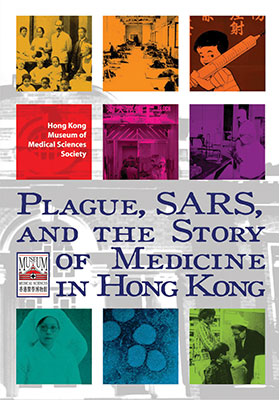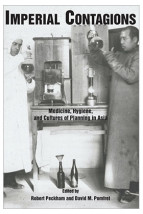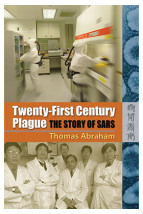Plague, SARS, and the Story of Medicine in Hong Kong
(鼠疫、非典、以及醫藥在香港)
ISBN : 978-962-209-805-3
April 2006
384 pages, 7″ x 10″
- HK$250.00
Ebooks
This volume is published to mark the occasion of the 10th anniversary of the Hong Kong Museum of Medical Sciences and the centenary of the Old Bacteriological Institute building that houses the museum.
Hong Kong has transformed from being one of the unhealthiest places in the world to one with the best health statistics. The story of how Hong Kong met the challenge of containing infectious diseases shows that much can be achieved despite the city’s limitations in size and resources. Hong Kong provided the facilities and support for the discovery in 1894 of the bacterium causing plague, and its scientists first described the coronavirus which caused SARS in 2003, almost 110 years later. It was in Hong Kong that the influenza viruses H3N2 and H5N1 were first isolated from humans.
The volume covers Hong Kong’s medical development in the period from 1841 to early 2005, including the history of hospitals and of medical education, and the role of the Bacteriological Institute. It is a record of how the health care system has evolved and how the territory has been able to cope with the massive increase in population.
「這是一本由香港醫學博物館學會主編的,關於香港醫療事業與公共衛生歷史的著作。幾位作者對於這一題材研究有年。香港醫學博物館1996年在原香港病理檢驗所舊址上建立以後,經常舉辦有關醫學知識與香港醫療事業歷史的講座。這本書比講座詳盡、深入得多,但仍有相當的可讀性。
從風土上說,香港是中國華南地區的一個組成部份,抗疫治病從來都是地區性的大問題。然而1842年的開埠以及隨之而來的特殊條件,又使得最終香港今天擁有水平超出周圍的醫療體系。
本書通過幾個相對獨立的專題,再現香港醫療體系的形成過程。包括:幾次嚴重影響社會的傳染病(包括影響了全世界的1894年鼠疫與2003年SARS),香港醫院體系的建立,原香港細菌學研究所(香港醫學博物館所在地的第一個機構)的貢獻,香港抗結核病歷史,香港醫學教育的形成等。其中的每一個故事,可以說都是香港活歷史的一頁。
這本書提到香港醫療體系與公共衛生今天面臨的一些問題,而關於今天香港一般衛生水平仍須提高的提醒,可以看成是香港開埠以來全部抗疫歷史的一個啟示。」 —趙斌






